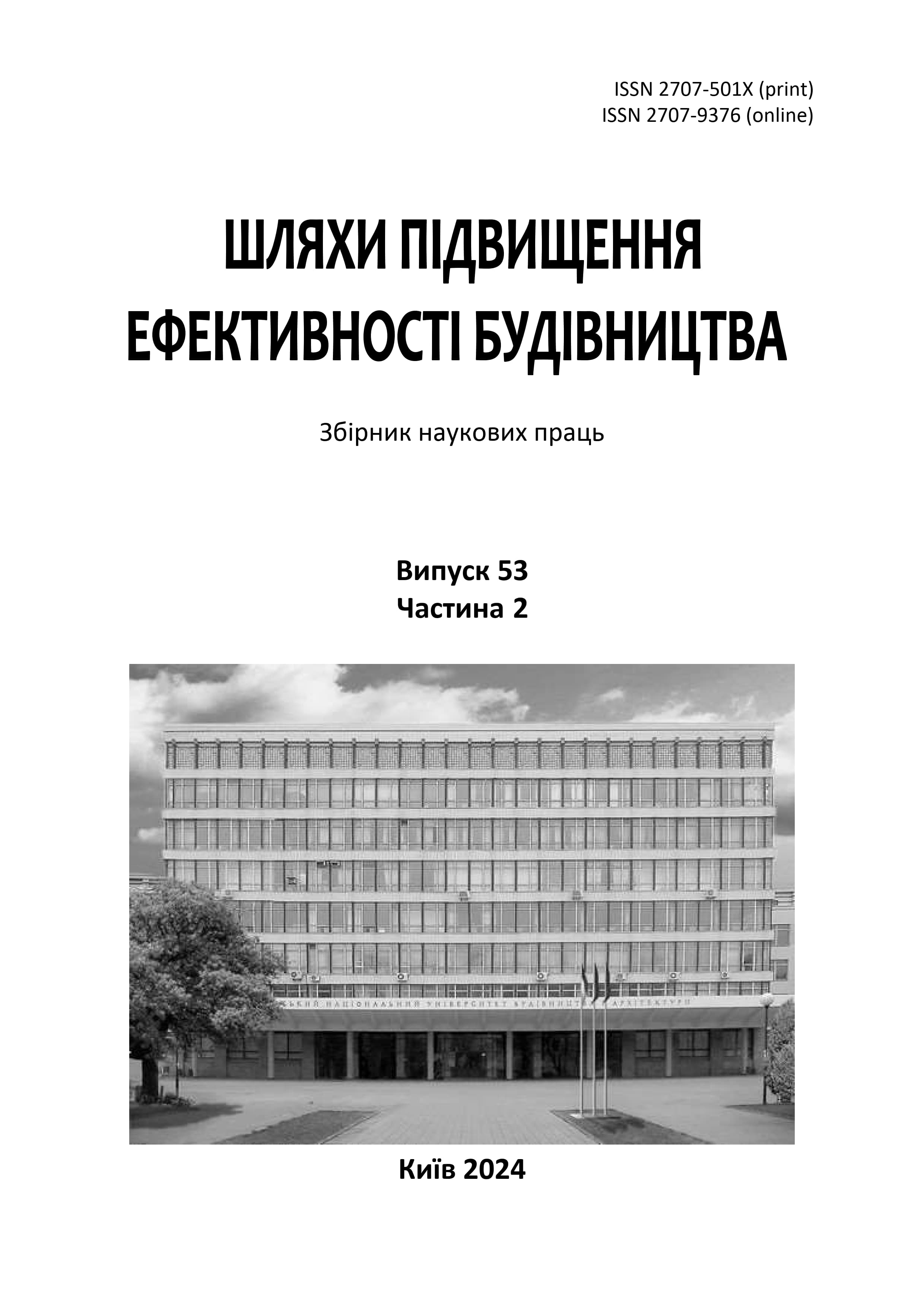Investment planning tools for housing stock reconstruction
DOI:
https://doi.org/10.32347/2707-501x.2024.53(2).321-330Keywords:
reconstruction, housing stock, investment planning, effectiveness, NPV, methodology, tools, developmentAbstract
The article presents the conceptual and methodological foundations for evaluating the effectiveness of housing regeneration projects in the context of contemporary urban and socio-economic transformations. The study focuses on the systematization and analysis of investment planning tools that enable evidence-based decision-making regarding the reconstruction of outdated housing stock, ensuring economic viability, technical efficiency, and social justification. The object of the research is the processes of residential stock reconstruction, while the subject is the set of investment design tools, including financial, analytical, techno-economic, spatial, and institutional approaches. The methodology integrates life cycle cost analysis (LCCA), financial modeling (NPV, IRR, DPP), energy modeling, SWOT analysis, GIS technologies, and value engineering. The paper proposes a comprehensive concept for the reconstruction of a deteriorated urban district, incorporating principles of inclusiveness, sustainability, and community engagement. A case study of BIM-based reconstruction of a five-story residential building demonstrates reduced construction time and material waste. A multi-criteria evaluation framework is presented, covering economic, environmental, social, and urban planning indicators. The findings can inform municipal regeneration programs, investment project assessments in development, and policymaking for post-war recovery. The study substantiates the need for a holistic approach that integrates economic feasibility, technical implementability, and social relevance in reconstruction projects. Key investment planning tools are identified to support balanced and sustainable housing modernization decisions.
References
Гойко, А.Ф. Методичні питання оцінки ефективності роботи будівельного підприємства», Шляхи підвищення ефективності будівництва в умовах формування ринкових відносин, 2022. №49(1), С. 148–156.
Ізмайлова К.В., Абашкіна К.О. Обґрунтування економічної доцільності встановлення сонячних батарей на заміських житлових будинках. Будівельне виробництво -64, 2017. С. 23-29.
Ізмайлова К. В., Ізмайлова О. В. Система експертизи ефективності інвестиційних на стадії техніко-економічного обґрунтування. Управління розвитком складних систем. 2010. Вип. 4. -С. 45-54.
Закорко П.П., Белєнкова О.Ю. і Гао Ш. Класифікація проектів реконструкції селища в місті за їх ефективністю для населення. Будівельне виробництво, 2015, № 59, С. 26-32.
Сорокіна Л. В. Дослідження впливу макроекономічних регуляторів на динаміку нагромадження капіталу у будівництві України. Актуальні проблеми економіки. 2012. № 6. С. 69-81.
Bielienkova O. et al. Improving the organization and financing of construction project by means of digitalization. International Journal of Emerging Technology and Advanced Engineerig.2022. №. 8. С. 108-115.
Vorobec S., Kozyk V., Zahoretska O., Masuk V. Simulation Model of Planning Financial and Economic Indicators of an Enterprise on the Basis of Business Model Formalization. Data–Centric Business and Applications Evolvements in Business Information Processing and Management (Vol. 2) Springer Nature Switzerland.2020, рр. 299–319.
Титок В.В. Комплексний попередній аналіз інноваційно-інвестиційного проекту в житловому будівництві. Шляхи підвищення ефективності будівництва в умовах формування ринкових відносин.-2016.-ВипNo.34, С.139–151.
Nikolaiev V., Nikolaieva T. Bazysna modelʹ formuvannya vytrat zhyttyevoho tsyklu obʺyektiv nerukhomosti. Shliakhy pidvyshchennia efektyvnosti budivnytstva v umovakh formuvannia rynkovykh vidnosyn, 2014. , No. 34, pp.145–155.
Стеценко С. П., Ільїна Т. А. Ієрархічна модель оцінювання інфраструктурних ризиків підприємницької діяльності у будівництві. Наукові праці НДФІ. 2019. Вип. 1. С. 74-84..
Боліла Н.В. Функціонально-операційна трансформація систем управління будівельним підприємством на ґрунті Cals-технологій Управління розвитком складних систем. 2019. № 40 С. 156 – 159
Цифра Т.Ю, Вільницька Н.В., Шевчук К.І. Теоретичні підходи аналізу витрат життєвого циклу проекту будівництва та реконструкції спортивних і рекреаційних закладів у Австралії. Шляхи підвищення ефективності будівництва в умовах формування ринкових відносин. 2022. № 50 (2). С. 31-39.
Downloads
Published
How to Cite
Issue
Section
License

This work is licensed under a Creative Commons Attribution 4.0 International License.
Authors who publish with this journal agree to the following terms:
- Authors retain copyright and grant the journal right of first publication with the work simultaneously licensed under a Creative Commons Attribution License that allows others to share the work with an acknowledgement of the work's authorship and initial publication in this journal.
- Authors are able to enter into separate, additional contractual arrangements for the non-exclusive distribution of the journal's published version of the work (e.g., post it to an institutional repository or publish it in a book), with an acknowledgement of its initial publication in this journal.
- Authors are permitted and encouraged to post their work online (e.g., in institutional repositories or on their website) prior to and during the submission process, as it can lead to productive exchanges, as well as earlier and greater citation of published work (See The Effect of Open Access).

